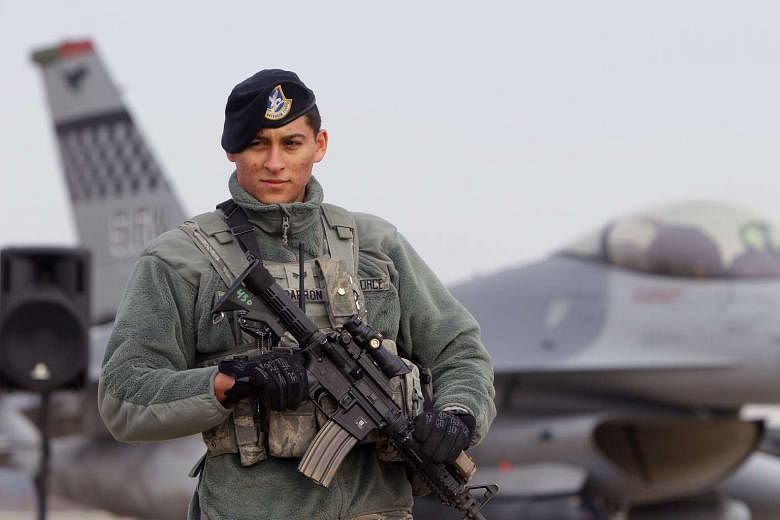The United States will need to expand its military presence in the Asia-Pacific to balance the shift in military power there, said a major report on Washington's defence strategy in the region.
The 275-page report, commissioned by the US Congress, calls on the administration of President Barack Obama to, among other things, station more nuclear attack submarines and littoral combat ships, bolster regional missile defence systems and negotiate for the US air force to be deployed at more airfields in the region.
The report, prepared by the bipartisan think-tank Centre for Strategic and International Studies (CSIS), painted a bleak picture of the US defence posture in the Asia-Pacific, saying that challenges like the US' deteriorating ties with Russia, China's assertiveness in the South China Sea and North Korea's continued belligerence were shifting US military calculations.
While noting that Washington has taken steps to reinforce its Asia rebalance, it said implementation of the policy was no longer sufficient to protect US interests.
"Actions by countries in the region routinely challenge the credibility of US security commitments. US capability development is not keeping pace with challenges by potential competitors, resulting in the balance of military power in the region against the United States," it said.
The report described China as the "primary strategic challenge for the US and for the Asian security landscape writ large".
"If China's economic, military and geopolitical influence continues to rise at even a modest pace... the world will witness the largest shift in the global distribution of power since the rise of the US in the late nineteenth and twentieth centuries."
The document comes after a year of tense relations between the US and China, over issues such as cyber security and the South China Sea territorial disputes. It also comes just two weeks after North Korea claimed to have successfully tested a hydrogen bomb.
Apart from the proposal to deploy more military assets, the think-tank makes three other suggestions: align the Asia strategy within the US government, and with allies and partners; strengthen cooperation with partners in the region; and accelerate development of innovative capabilities, like advanced long-range missiles.
On the Obama administration's Asia strategy, the report said the White House has, thus far, failed to articulate a clear and coherent strategy.
The team behind the report said it could not find any central US government document that describes the rebalance strategy. Thus, during its interviews with people in the Department of Defence, Congress and other agencies, it found a lot of confusion about the strategy and concern about its implementation.
The CSIS team also detailed its assessments of the state of the US security cooperation with its various partners in the region.
Singapore, it said, had South-east Asia's "most advanced, most capable and best trained" military, despite its relatively small size.
"When it comes to offering concrete support, Singapore is perhaps the greatest proponent of a robust and sustained US military presence in South-east Asia. The access and cooperation provided by the city-state help to make possible critical US military operations in the region."


